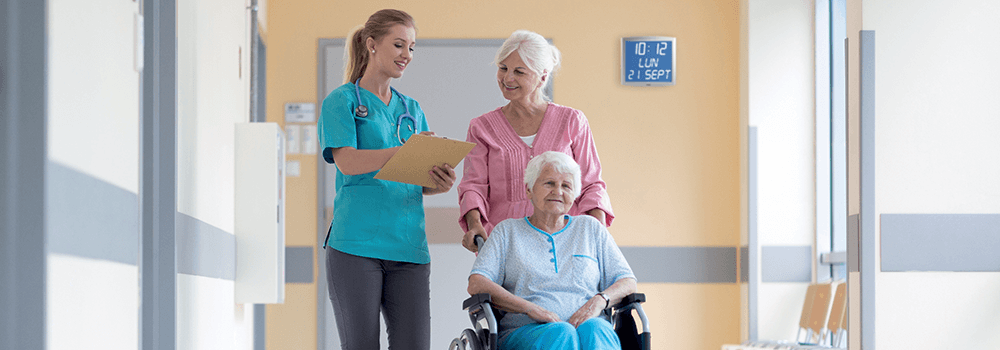There are many benefits to having audio and alert systems in nursing or care facilities. You can use them to improve residents’ daily lives, make your staff’s work easier, or boost safety across the facility.
Make daily life easier and more enjoyable for residents
Care-home residents have a variety of needs, abilities and states of health. It is challenging to serve all of them; a one-size-fits-all approach will not work.
You can promote residents’ wellbeing and improve their days by issuing clear announcements about mealtimes, excursions or entertainment. These can be live for ad-hoc messages, or recorded for regular notifications. A system that allows you to play music can also contribute to a relaxing and comfortable atmosphere.
Synchronised clocks, whether digital or analogue, always display the time accurately. This can be reassuring for residents who need a sense of security. It’s also beneficial for staff, helping them carry out time-sensitive activities accurately.
Improve organisation and communication among staff
With an efficient audio system, managers can target announcements to one zone, several areas, or the entire facility. You can set regular times for communications if required. Pre-recorded and standardised messages enable you to alert staff quickly, easily and discreetly in an emergency.
Implement an effective safety plan
Audio systems play a vital role in supporting and implementing your safety or lockdown plan. They also help in more minor emergencies, like alerting staff if a resident has a small accident or is distressed. Displaying alerts using text as well as sound ensures that you reach all residents, including those with hearing or visual impairments.
Bodet’s Harmonys system meets all your audio and alert needs
Harmonys is a comprehensive, versatile audio system that runs via your existing IT network.
Use it to broadcast bells, music and announcements across your site or to specific zones. Alerts have a variety of trigger methods including manually via a button box, or remotely using a smartphone.



